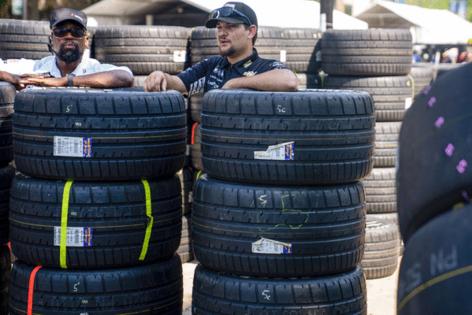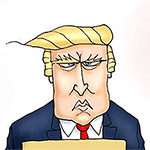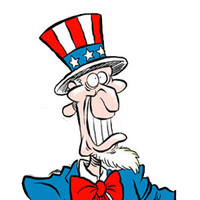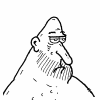Crumb rubber: How NASCAR recycles the thousands of tires it used over the Chicago race weekend
Published in Auto Racing
CHICAGO — During a weekend of hot, high-speed friction against the asphalt of the NASCAR Chicago Street Race course, thousands of tires burn out and wear down. After a few dozen laps, they lose their grip and become obsolete.
But their life cycle doesn’t end there. Each NASCAR race weekend, most of the 3,000 tires provided by Goodyear Racing become a fraction of the tens of thousands recycled annually by Liberty Tire Recycling. Before state laws prohibited it, used tires would be landfilled or stored in stockpiles, said Rick Heinrich, Goodyear’s product manager for NASCAR.
“And at a certain point, that’s got to be dealt with. We came to the realization that there had to be a new use for these tires, and that’s where we’re at today,” he said. “When they’re not usable anymore on the street, they’re very suitable when they’re turned into a different type of product to make other things, things that are all around us.”
In 2024, a total of 215 million tires — including 92,588 from NASCAR — were recycled by Liberty, a company based in North Carolina that collects and processes racing, as well as auto and truck tires, from all across North America, according to spokesperson John Dowdy.
The ideal would be to reuse a tire for the rest of its life, Dowdy said, which is possible when retailers resell gently used auto or truck tires for less than new ones. But, after being used, racing tires don’t usually have any more life left in them, at least in their original form.
At a Liberty facility in Concord, a suburb of Charlotte in North Carolina, NASCAR racing tires are shredded into quarter-sized chips that can be used as aggregate in roadbeds, landfill liners and landscaping products.
“It’s a perfect example of sustainability,” Heinrich said. “You’re taking stuff that’s worn out, you can’t use it again for what it was originally built for, but it goes into something else. Nothing is wasted.”
The shredded tires can also be used as a more efficient fuel to power kilns and boilers in concrete factories, electric plants and pulp and paper mills. However, while burning so-called tire-derived fuel is cleaner than using other fossil fuels, the process still releases some greenhouse gases such as carbon dioxide, nitrogen oxides and sulfur dioxide.
IMC Outdoor Living, a division of Liberty in the village of Godfrey in southwest Illinois, makes fully recycled rubber products out of tires for both residential and commercial landscaping. One of these products is rubber mulch, with a realistic texture that makes it look just like its wood counterpart, and which can be used to cover the ground in playgrounds and parks, making it safe for children to jump and land on.
However, there are concerns that such products derived from tires can expose kids to heavy metals and other harmful chemicals, which can act as carcinogens or neurotoxins.
In 2024, the company gave a second life to 4.7 billion pounds of rubber, Dowdy said. That material might otherwise have been disposed of illegally.
These recycled products also eliminate the need to produce entirely new ones, which would entail deforestation. Processing synthetic rubber is an energy-intensive process that can cause pollution, too.
“What we ultimately want to do is, we want to replace virgin rubber in as many goods as we possibly can,” Dowdy said.
Other Liberty recycling facilities grind up the tires into an even smaller end product: crumb rubber. Crumb rubber is at most 0.25 inches, and a single passenger car tire can produce some 10 to 12 pounds of the product.
In one of its main uses, crumb rubber is mixed into asphalt to make it more durable and resistant to cracking.
In September of last year, 2,800 end-of-life auto tires from Walmart were processed by Liberty and became part of a mix used to repave the parking lot of one of the chain retailer’s stores, in Rolla, Mo.
“We’re keeping tires from going into and just clogging up landfills, or being dumped (in) nature and creating all this blight,” Dowdy said. “We can actually create products that make other things better.”
©2025 Chicago Tribune. Visit chicagotribune.com. Distributed by Tribune Content Agency, LLC.







Comments